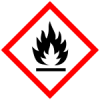The Producer has a plan to phase out by 2024 pesticides listed in category 2 of the Globally Harmonized System of Classification and Labelling of…
Coalition status
BCI Phase out by 2024Fairtrade Red
Bonsucro Banned
Chemicals that are banned by the Bonsucro…
This list contains 207 pesticides. The list is valid as of January 2018.
Prohibited pesticides that must not be used on Fairtrade products under any…
FSC restricted HHPsChemical pesticide presenting one out of three of the following hazards: acute toxicity, chronic toxicity and environmental toxicity.
GCP-Phase-Out 2026Use of pesticides in the Phase-out List are reduced through use of Integrated Pest Management and phased out by 2030, if feasible. This includes…
RSB BanNone of the chemicals recorded in the WHO’s 1a and 1b lists shall be used. The use of chemicals recorded in Annex III of the Rotterdam Convention, in…
UEBT ProhibitedThe use of Prohibited Agrochemicals is prohibited for certified, prioritised and verified ingredients, because they are considered Highly Hazardous…
Details
Type: Pesticide
Use: Insecticide
Example applications: Fruit including apples, pears;Vegetables including brassicas, beans;Cereals;Tomatoes;Lettuce;Ornamentals
Example pests controlled: Aphids;Thrips;Mealybugs;Whiteflies;Spidermites
Mode of action: Systemic with contact and stomach action. Acetylcholine esterase inhibitor.
Source: PPDB
Toxicty
Bird toxicity
Highly toxic to birds acute oral LD50 (LD50 < 200mg/bg bw)
Highly toxic to birds acute oral LD50 (LD50 < 200mg/bg bw)
Highly hazardous (Class WHO Ib)
WHO class I – b: highly hazardous
Mammal toxicity
Acute oral LD50 for most sensitive mammal species (LD50 < 200mg/kg bw).
Identifiers
GHS safety labels
About Globally Harmonized System of Classification and Labelling of Chemicals (GHS)
From Wikipedia: The Globally Harmonized System of Classification and Labelling of Chemicals (GHS) is an internationally agreed-upon standard managed by the United Nations that was set up to replace the assortment of hazardous material classification and labelling schemes previously used around the world. Core elements of the GHS include standardized hazard testing criteria, universal warning pictograms, and harmonized safety data sheets which provide users of dangerous goods with a host of information. The system acts as a complement to the UN Numbered system of regulated hazardous material transport. Implementation is managed through the UN Secretariat. Although adoption has taken time, as of 2017, the system has been enacted to significant extents in most major countries of the world.[1] This includes the European Union, which has implemented the United Nations' GHS into EU law as the CLP Regulation, and United States Occupational Safety and Health Administration standards.
- H226

Flammable liquid and vapour
Class: Flammable
Subclass: Liquids - H301

Toxic if swallowed
Class: Acute Toxicity
Subclass: Oral - H311

Toxic in contact with skin
Class: Acute Toxicity
Subclass: Dermal - H319

Causes serious eye irritation
Class: (Corrosion)Damage/irritation
Subclass: Eye - H331

Toxic if inhaled
Class: Acute Toxicity
Subclass: Inhalation - H400

Very toxic to aquatic life
Class: Aquatic
Subclass: Acute - H410

Very toxic to aquatic life with long lasting effects
Class: Aquatic
Subclass: Chronic
